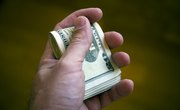When you're ready to go back to school, your first stop should be FAFSA, the Free Application for Federal Student Aid. This application lets you and the government know how much money you can afford to spend on college, and how much of a Pell Grant you're eligible for. Pell Grant money usage is rather flexible. Once your tuition is paid by the grant, you can spend the remainder of it on anything that helps you attend college.
Understanding the Pell Grant
The Federal Pell Grant is money given to students who show a financial need. This money is designed to help the student pay their college expenses. Unlike subsidized and unsubsidized loans , the Pell Grant doesn't have to be repaid. The money is sent directly to the college the student attends, and in turn, the college releases the funds to the student after using the money to cover any tuition or material balances.
Financial Aid Refund
As of 2018, a student can qualify for a maximum of $6,095 to help pay for tuition, transportation, books and other costs associated with going to school. The grant amount is based on how much money the student, or his parents, make and how much money the college costs per semester. A financial aid refund is the FASFA refund check that students receive from the college after tuition and material fees have been paid.
Knowing What You Can Spend
The first thing Pell Grants pay for is a student's tuition and books, as these are the student's most pressing needs. Because the money goes directly to the school rather than the student, the school subtracts all costs from the money first. If any money remains, it's refunded to the student, usually several weeks into the start of the semester. The student should use the money to cover expenses related to going to school, which include day care costs, buying or repairing a car, gas, food, clothing, and housing expenses. However, a student could also blow the money on a huge party if he wanted to, though that would be inadvisable.
Following the Rules
While a student can ultimately spend the money the way he wants without having to answer to the government, rules do apply to his actually getting the money. For instance, the student has to attend classes to receive the money. If he applies and enrolls, but doesn't attend a single class, the money returns to the government, and the student is required to withdraw from the classes. If he doesn't withdraw and still doesn't attend classes, the Pell Grant will not pay his balance. He'll be billed directly for the balance.
Related Articles
References
Writer Bio
Brooke Julia has been a writer since 2009. Her work has been featured in regional magazines, including "She" and "Hagerstown Magazine," as well as national magazines, including "Pregnancy & Newborn" and "Fit Pregnancy."










